Work-Life Wellness 2026: How the Rise of Holistic Wellness is Redefining the Workplace
Last Updated Oct 23, 2025

The State of Work-Life Wellness 2026 report reveals a decisive lifestyle shift: employees are moving away from a work-hard, play-hard mentality and building their lives around wellbeing. Stress, burnout, and rigid return-to-office mandates are fueling this change, while gyms, wellness studios, and outdoor spaces have emerged as the new “third places” where people recharge, connect, and sustain healthy routines. What was once an afterthought in benefit packages is now a baseline expectation shaping how employees live, work, and evaluate their employers.
Across the globe, the message is clear: wellness is no longer a perk, it is a daily priority. Workers increasingly expect employers to enable holistic health across the five pillars of wellness: fitness, mindfulness, therapy, nutrition, and sleep. HR leaders who align their programs with this shift will gain a competitive advantage in hiring, productivity, engagement, and retention. This expectation is not isolated to one region or age group; it represents a global, cultural transformation that is reshaping the fabric of modern work.
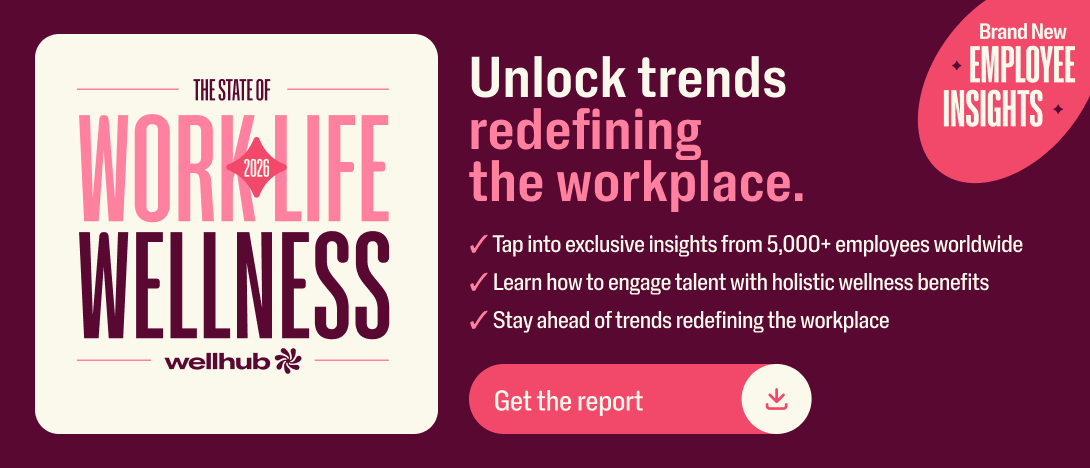
The Pressures Driving a Wellness-First Mindset
Employees are experiencing unprecedented levels of stress and burnout, particularly younger generations. More than half of Gen Z (55%) and Millennials (55%) report their stress has increased year over year, compared to 47% of Gen X and 38% of Baby Boomers.
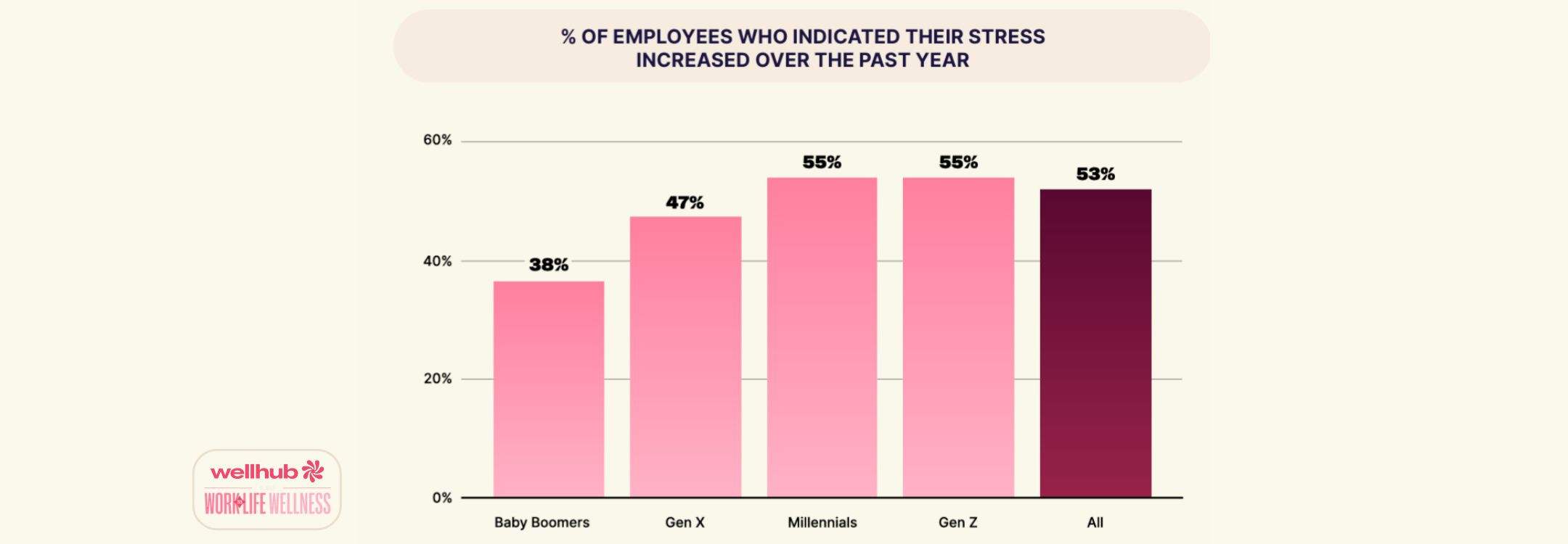
Overall, 90% of employees say they experienced burnout symptoms in the past year, with nearly 4 in 10 (39%) experiencing them at least weekly. These pressures are not temporary spikes; they are sustained strains that threaten both individual wellbeing and organizational performance.
But employees are not simply absorbing these pressures; they are recalibrating their lives in response. Ninety-five percent agree that physical, mental, emotional, and social aspects of wellbeing are interconnected, with 46% strongly agreeing.
Sixty four percent say they are more focused on wellness today than five years ago. The coping mechanisms they choose are holistic and intentional: working out (59%), sleeping more (56%), spending time with family and friends (47%), and eating well (46%). These habits reflect a recognition that wellness is no longer something to squeeze into the margins of life but something that must be woven into daily routines.
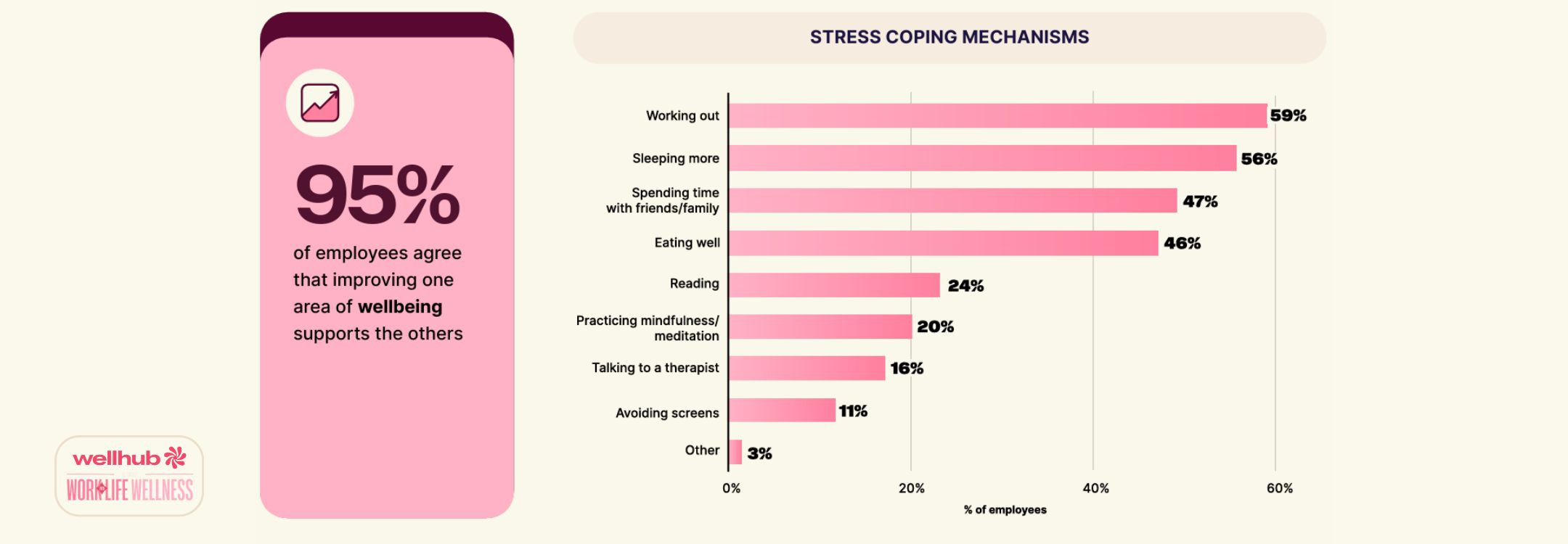
The rise of wellness-focused “third places” brings this shift into sharper focus. Ninety-one percent of employees say that spending time in gyms, yoga studios, or recreational spaces improves their ability to manage work-related stress. These spaces are not luxuries but essentials that employees are weaving into the rhythm of their lives. Three-quarters (74%) visit them at least weekly, and 21% go daily. They provide a sense of belonging and accountability, with 62% saying community support is critical for sustaining healthy habits. Eighty-three percent would be more likely to join a wellness initiative if it included a group or community component. Yet barriers remain: half of employees cite lack of time, while 27% point to lack of motivation and 23% to cost. These gaps are driving higher expectations for employers, with nearly half (47%) of employees saying they now expect more wellness support at work compared to a year ago.
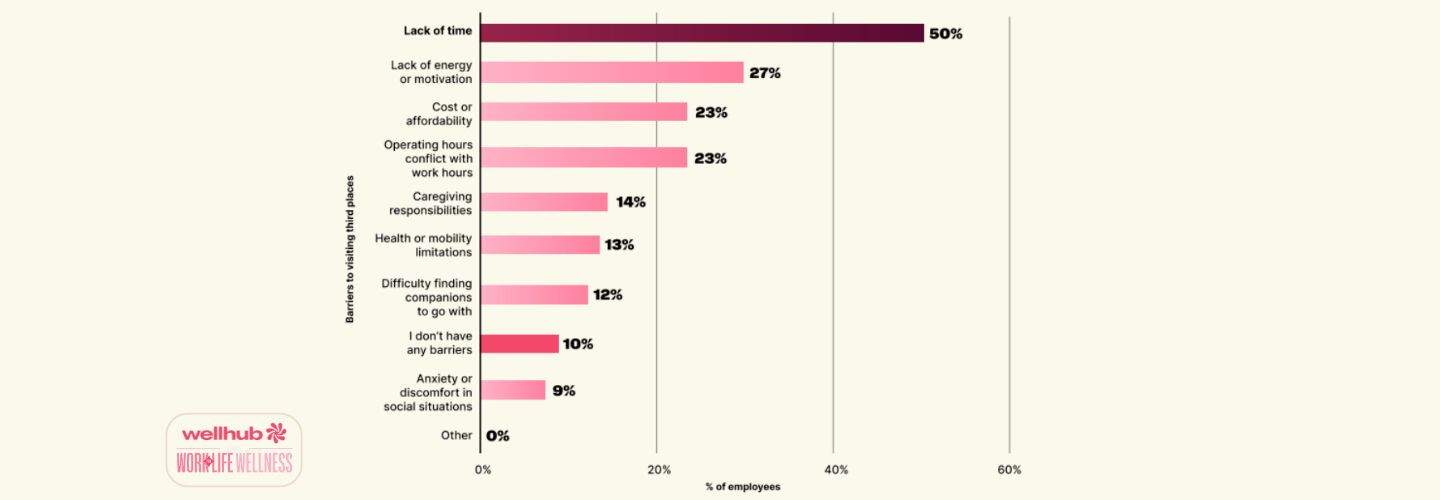
Beyond physical fitness, these third places are becoming cultural anchors. They are where people build community, find accountability, and reset their energy for the challenges of work and life. They also play a role in combating loneliness and isolation, which remain widespread across global workforces. When employees connect in these environments, they not only improve their physical and mental health but also strengthen social bonds that carry over into workplace collaboration and resilience.
The State of Employee Wellbeing
Despite these lifestyle shifts, employee wellness overall is declining. In 2025, just 54% of workers rated their wellbeing as good or thriving, down from 63% in 2024. The deterioration of wellbeing is not limited to a single factor but emerges from the intersection of long work hours, lack of rest, and insufficient organizational support.

Sleep and work stress are the most damaging forces. Forty-four percent of employees say lack of sleep harms their wellbeing, while 40% cite work stress. When diving deeper on what’s impacting sleep, nearly half (47%) say stress or anxiety keeps them up at night, cutting into the recovery that sustains productivity.
Mindfulness, though recognized by 57% of employees as important, is rarely practiced consistently. Only 22% do so daily. This inconsistency highlights a gap between awareness and action, and for many employees, it signals the need for more structured support. Alongside mindfulness, therapy has emerged as a critical outlet. Younger generations are turning to therapy in greater numbers: 68% of Gen Z and 59% of Millennials consider therapy critical to their wellbeing, compared to 45% of Gen X and 33% of Baby Boomers.
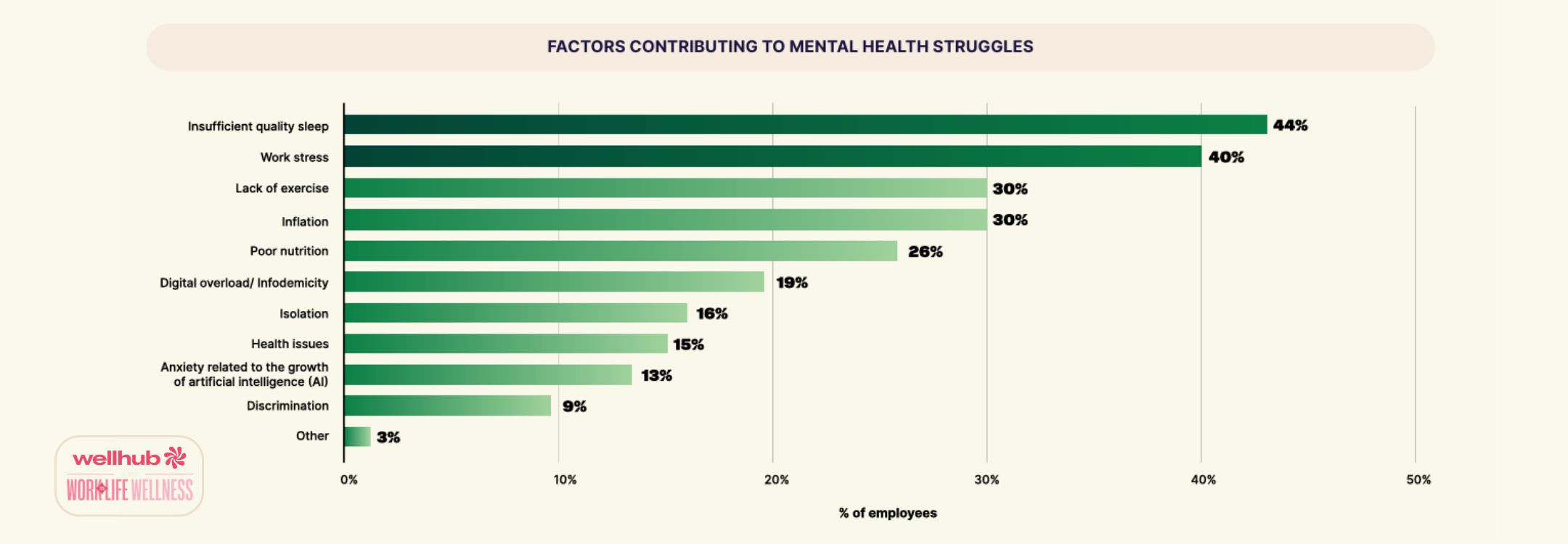
Physical health is also under pressure. Fifty-one percent say lack of time prevents them from exercising, while 26% cite lack of motivation. When employees do engage, they gravitate toward accessible, energizing activities: 32% choose running and 23% strength training. These preferences show that employees want to move but struggle to integrate fitness into busy schedules. The cumulative effect of these challenges is a workforce that is aware of what it needs but constrained in its ability to act consistently.
Structured wellness programs help fill the gap. Employees with access to these programs report higher wellbeing across every measure. Sixty-one percent rate their mental health positively, compared to just 40% of those without. These wellness programs help mitigate the effects of stress, poor sleep, and lack of exercise, turning intention into sustained improvement.
This shows the critical role employers can play: without organizational support, individual efforts are less likely to take hold and become consistent habits.
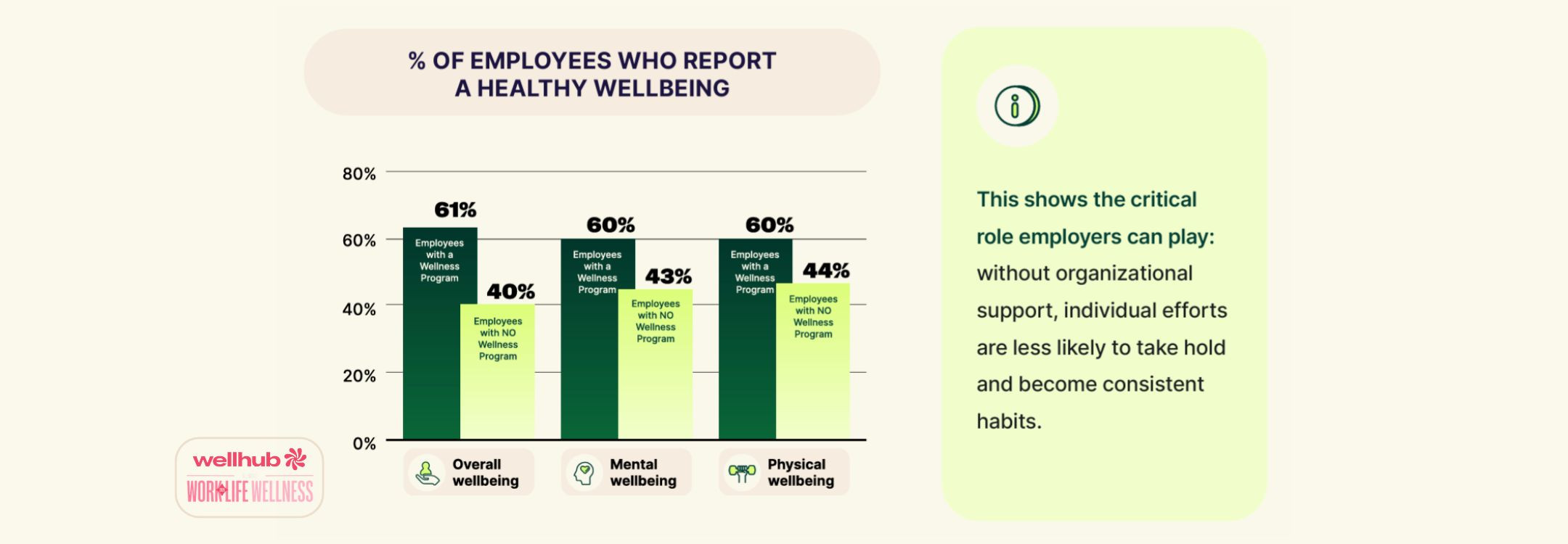
The Benefits Gap
The disconnect between what employees need and what employers provide is widening. Satisfaction with corporate wellness programs has fallen to 29% in 2025, down from 41% in 2024. And only 44% of employees say wellness is truly ingrained in their company’s culture. This gap represents more than unmet expectations—it signals a trust deficit between employees and employers.
Employees want integrated, holistic support that reflects the interconnected nature of physical, mental, and social health. The most requested additions include fitness (24%), nutrition (24%), financial wellness (23%), flexible work arrangements (23%), therapy (23%), and sleep support (22%).
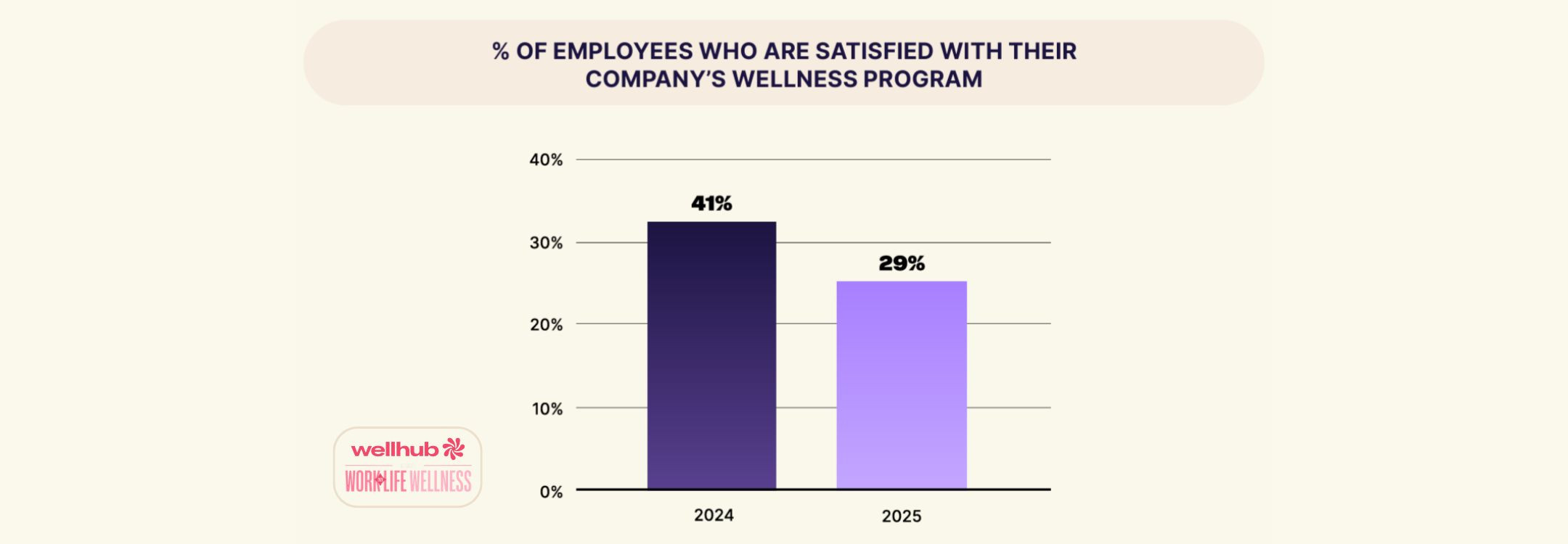
The demand is not for one-off perks but for ecosystems of support that meet diverse needs. Without these, employees feel their organizations are falling short, limiting both engagement and loyalty. This dissatisfaction does not remain silent; it translates into reduced morale, lower productivity, and ultimately, higher turnover.
The benefits gap also reveals how quickly expectations are shifting. In previous years, a gym discount or annual wellness fair may have sufficed. Today, employees expect daily access to resources that help them manage stress, sustain energy, and care for their families. They want programs that are flexible, digital, and inclusive.
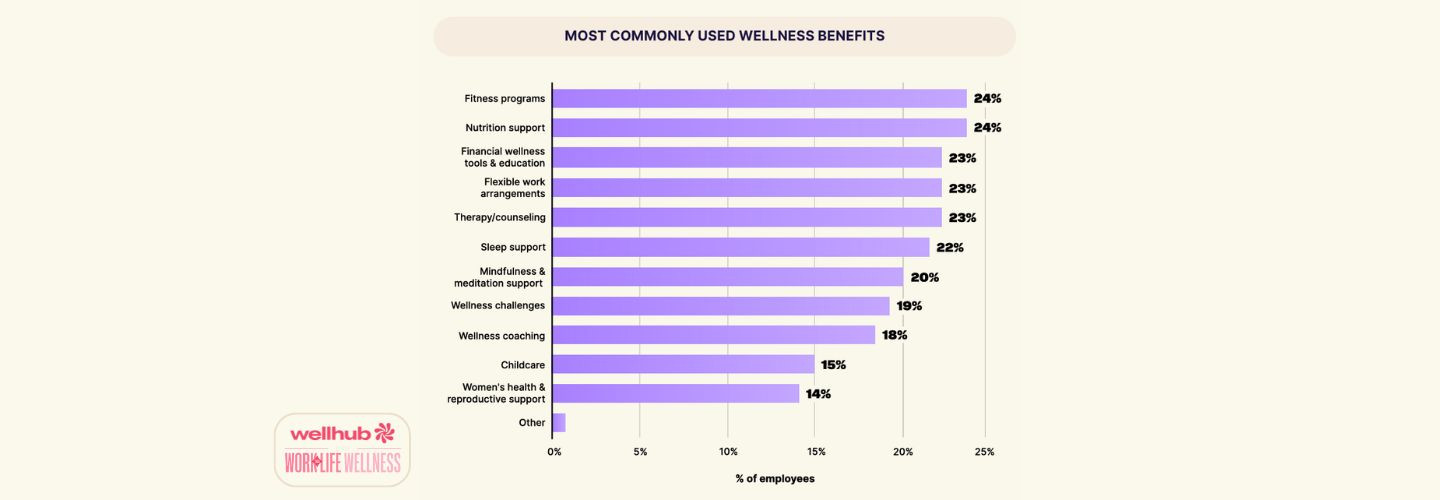
Wellness as a Talent Imperative
Wellness has become a decisive factor in career decisions. Eighty-six percent of employees say they would only consider companies that emphasize wellbeing when seeking their next role. The same percentage (88%) say they value their wellbeing at work as much as their salary, underscoring how wellbeing has become a core part of compensation. These numbers demonstrate that wellness is now a key component of the employer value proposition.
Wellness also shapes perceptions of leadership and trust. Ninety percent of employees with access to wellness programs feel adequately compensated, compared to just 57% without. Seventy-seven percent of those with wellness programs say HR cares about their wellbeing, versus only 38% of those without. These differences reveal that wellness programs do more than improve health; they strengthen culture, build loyalty, and create the conditions for engagement. They transform employee perception of whether leadership genuinely values them.
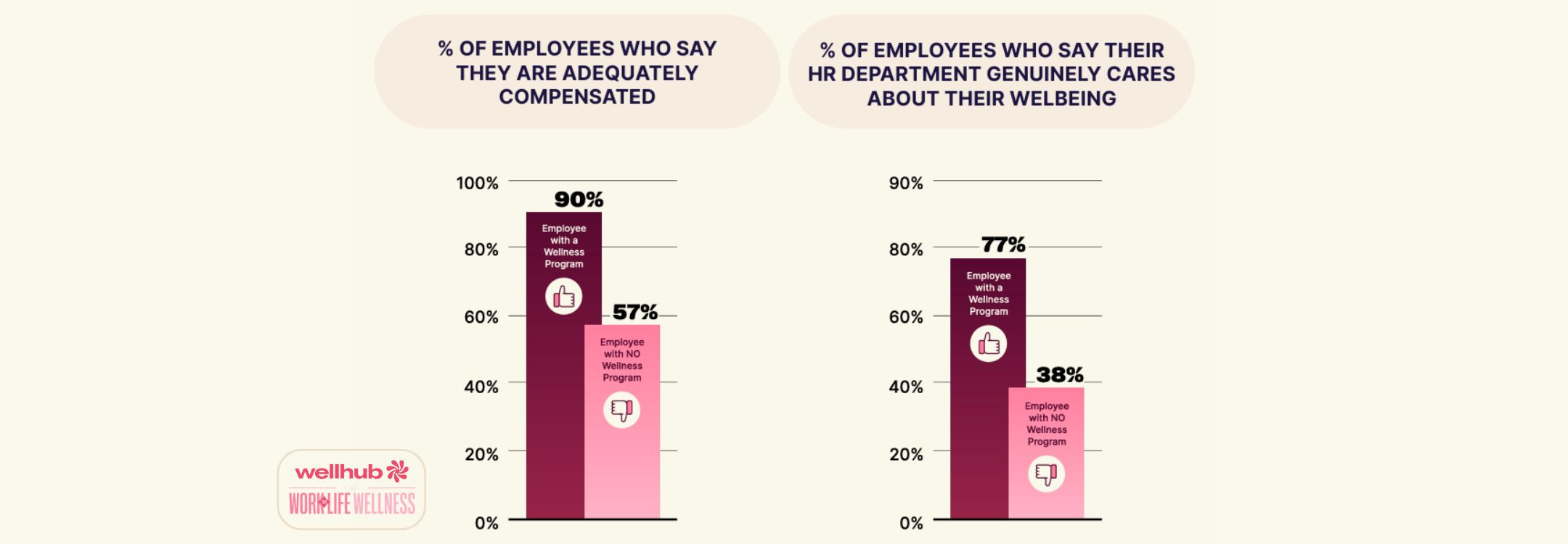
When organizations neglect wellness, the consequences are immediate. Eighty-five percent of employees say they would consider leaving a company that does not prioritize wellbeing. Millennials and Gen Z, who now form the majority of the workforce, are particularly likely to act on this conviction, accelerating the urgency for companies to act. The risk is not abstract. It shows up in attrition rates, recruitment challenges, and weakened employer brands.
The Takeaway for HR Leaders
Wellness is redefining how employees live, work, and shape their careers. To stay competitive, organizations must:
- Address rising stress and burnout with holistic support across the five pillars of wellness.
- Support access to third places and digital tools that employees are already using to recharge, connect, and build healthy habits.
- Close the benefits gap by aligning offerings with employee expectations and providing integrated, holistic ecosystems of support.
- Position wellness as a core talent strategy, embedding it into culture, leadership practices, and daily routines.
The companies that lead on wellness will be the companies that lead on talent. In today’s evolving workplace, wellbeing is not optional, it is a business imperative. Investing in wellbeing is not just about healthier employees; it is about building stronger cultures, fostering deeper trust, and creating resilient organizations prepared to thrive in the years ahead. Organizations that recognize and embrace this shift will position themselves not only as employers of choice but also as leaders of a healthier, more sustainable workforce.
Get access to our full report for expert insights and valuable guidance.

Company healthcare costs drop by up to 35% with Wellhub*
See how we can help you reduce your healthcare spending.
Category
Share

The Wellhub Editorial Team empowers HR leaders to support worker wellbeing. Our original research, trend analyses, and helpful how-tos provide the tools they need to improve workforce wellness in today's fast-shifting professional landscape.
Subscribe
Our weekly newsletter is your source of education and inspiration to help you create a corporate wellness program that actually matters.
Subscribe
Our weekly newsletter is your source of education and inspiration to help you create a corporate wellness program that actually matters.
You May Also Like

Corporate Wellness Trends HR Must Know for 2026 | Wellhub
See the top 2026 wellness trends shaping performance, retention, and culture—plus how HR can build a unified, ROI-driven wellbeing strategy.

Wellness Points Programs: Boost Employee Health & Engagement | Wellhub
Turn your workplace wellness strategy around with a points program that rewards healthy behavior with perks, from extra time off to gift cards.

Employee Financial Wellness Programs: Ultimate HR Guide | Wellhub
Create an effective financial wellness program that supports your employees in their financial needs, boosting productivity and retention.